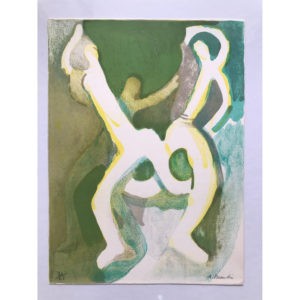Beaudin, André
Born on February 3, 1895 in Mennecy, Île-de-France, André Beaudin entered the École des Arts Décoratifs in 1911, where he studied for four years. Mobilized during the First World War from 1916 to 1919, he married Suzanne Roger in 1919, a budding artist. In 1921, a turning point in his career came when he traveled to Italy and met Juan Gris, becoming his friend. His meeting with André Masson in 1922 was also decisive. Although initially influenced by Henri Matisse, he later turned to Picasso and Juan Gris, developing a cubist style characterized by pure forms, where the subject becomes the central theme. Discover all our works in our art gallery in Paris.
2 results displayedSortedfrom newest to oldest
In 1923, André Beaudin held his first solo exhibition at Galerie Percier in Paris, with a preface by Max Jacob. Until 1929, he explored the theme of faces, then turned to sculpture in 1930, working in plaster, clay and bronze. He also tried his hand at lithography, illustrating Virgil's Les Bucoliques in 1926. His meeting with Paul Éluard in 1945 marked a turning point in his career.
After the war, Beaudin became a leading figure in French art, influencing his contemporaries, notably at the "Vingt jeunes peintres de tradition française" exhibition in 1941. In 1946, a retrospective of his paintings was presented at the Galerie Louise Leiris, revealing his evolution from cubism to a personal style. In 1953, a major exhibition of his work was held in Bern, highlighting his exploration of both straight and curved forms, with particular attention to light. From 1954 to 1958, his work was exhibited at the Galerie Charpentier as part of the group show "École de Paris".


